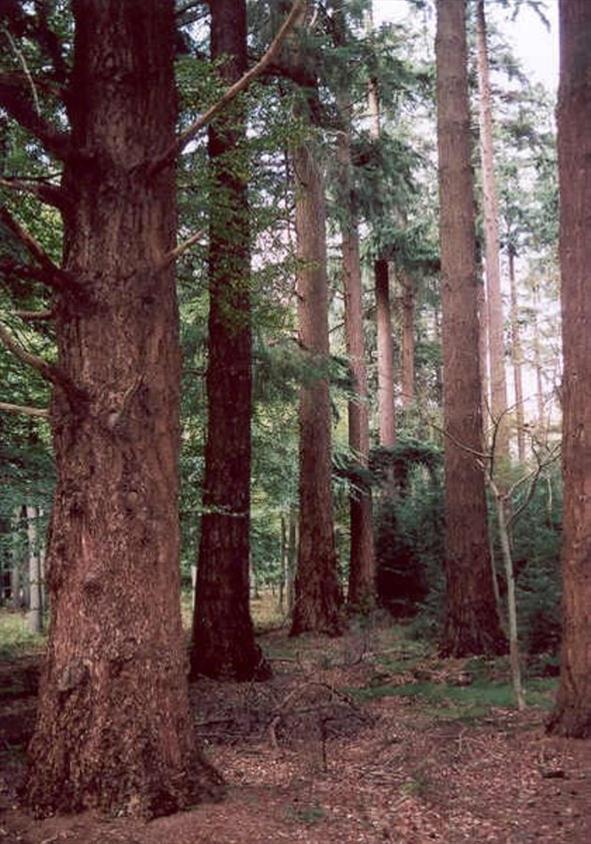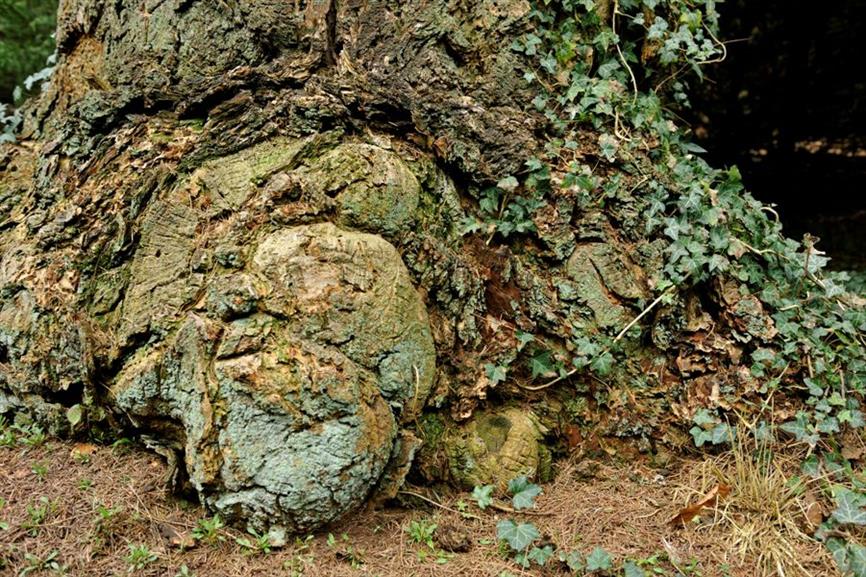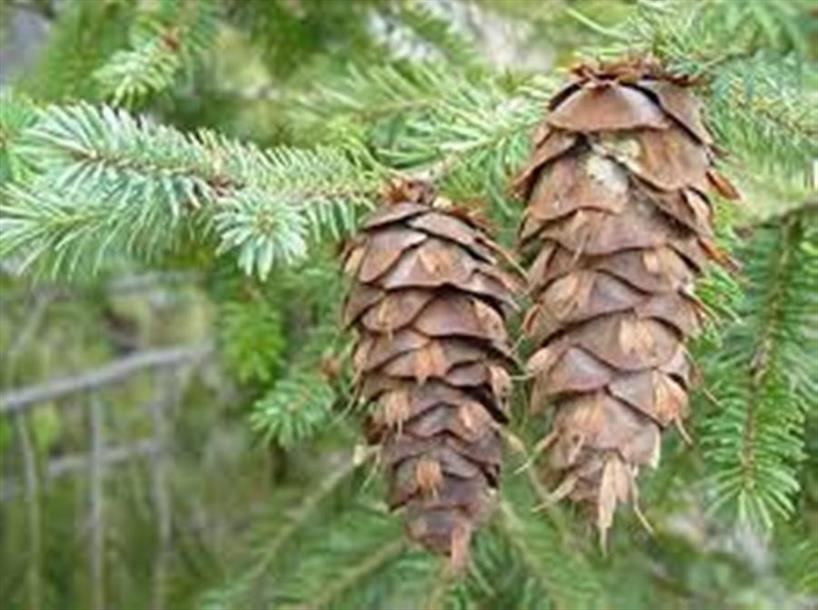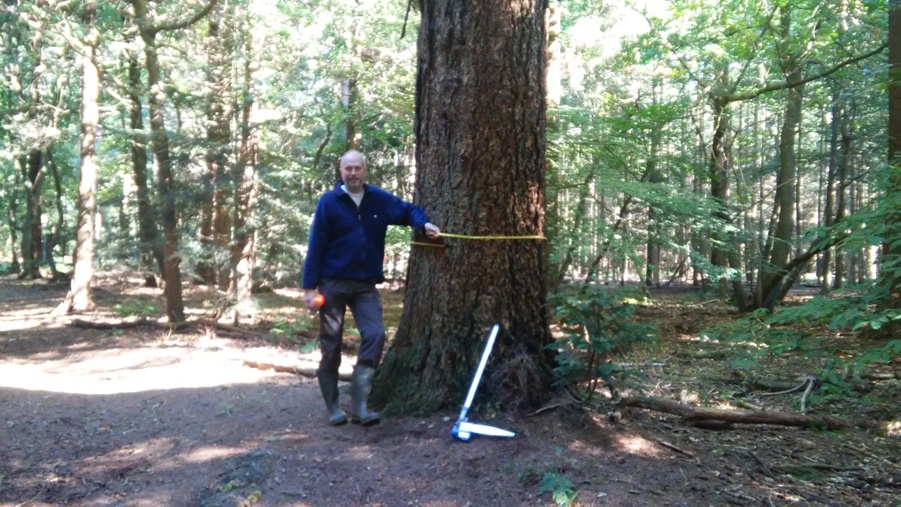Douglas Fir
Pseudotsuga menziesii
Pine familiy (Pinaceae)
A fragrant giant
In 1827, the Scottish botanist, David Douglas, brought these conifers, which could attain heights of 100m or more in the wild, from the American West into Europe. Growers were immediately excited and the tree was planted in abundance in forests across Europe. The tree grows very straight and is therefore suitable for making boards. This conifer is still found in plantations throughout Europe.
The tree is distinguishable by the two white stripes on the underside of the needles and the eye-catching cones from which dovetails seem to grow. Moreover the citrus scent, released when the needles are bruised, is also very distinctive. Another feature is the fissured bark with its yellowish-gold coloured cracks.
The tallest tree (over 50m) in the Netherlands is a Douglas fir specimen, which was planted ca. 1872 and grows in the grounds of Het Loo Palace.
Themes
Crown jewel on the Schovenhorst Estate.
Douglas fir is one of the world's best timber producers. The wood is used for timber, pilings and plywood. Creosote treated pilings and decking are used in marine structures. The wood is also used for furniture and it is a popular Christmas tree.
A refreshing tea can be made from the young leaves and twigs. Young shoot tips are used as a flavouring in cooked foods. The inner bark is dried, ground into a flour and mixed with cereal flour for making bread etc.
Douglas fir was often employed medicinally by various native North American Indian tribes who used it to treat a variety of complaints. It is rarely, if at all, used in modern herbalism.
Part of the Dutch National Conifer Collection.
Details
| Description: | Conifer, up to 100 m, conical in shape with horizontal branches and pendulous side branches. |
|---|---|
| Distributions: | Western north america, from canada to californië. |
| Habitat: | (coniferous) forests. |
| Year cycle: | Perennial (polycarpic evergreen) |
| Hardiness: | Colder than -4 f (very hardy) |
| Flowering period: | Maart - mei |
| Flower color: | Yellow, pink, red |
| Notes on flowers: | Male cones yellow; female cones red to pinkish. |
| Fruiting period: | September - november |



